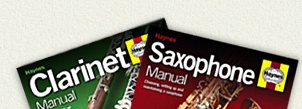The Split E key
A question that's often asked by prospective flute
players is " Should I get a flute with a split E? ".
This is often preceded by the question " Just what IS a split E?
"
Have a look at the picture below...

Two flutes - the upper without Split E, the lower with.
All that's different is that on the Split E flute the G key has been divided
up into two separate keys able to move independently but linked, so that
when the G is pressed it brings down its twin.
There's also a link to the G's twin from the low E.
The Split E really comes into use on the top E. The G key
isn't used for top E, and normally both key cups would remain open, but
with this link in place the lower of the two cups is brought down.
So what does it actually do??
Opinion is divided. In theory it gives you a cleaner, more responsive
top E - and yet you'll see a great many professional range flutes without
this feature fitted. That's because if a flute is built well enough it
really doesn't need any help with the top E.
So it's more perhaps a feature of cheaper instruments. Then
again, the standard of manufacturing in the budget instrument arena is
much higher than it used to be - perhaps making the Split E unnecessary.
If a flute gives you an iffy top E then nine times out of ten it's more
than likely due to a dodgy head joint than a need for a Split E.
To be frank it's really not worth working up a sweat about. Most flute
makers offer the same model with or without the Split E, the difference
(on student instruments anyway) is ten or twenty pounds or so....nothing
worth quibbling about - so if in doubt, get the Split E variant. If you're
a player upgrading then you're the best equipped to decide whether you
need this function or not. Try a Split E and a non-Split E model side
by side and see if there's a difference.
There's also a mechanical drawback to the mechanism. Whenever
keys are linked together in this fashion it becomes vital that there's
no wear or free play on the keys (see the action
test), which increases the likelihood of developing a leak.
It also means there's more to go wrong.
The Split E mechanism requires careful regulation of both the link from
the G to its twin key and the link from the E to the twin. It also makes
the top E action slightly heavier.
Another option associated with the G and Split E keys is
an 'inline G'.
The flutes pictured above both have what's known as an 'offset G'. Note
the relationship of the G and Split E keys to the other keys - they're
set slightly forward. On an 'inline' model these two keys would be in
line with the surrounding keys.
As per the Split E debate, opinion is divided as to how beneficial or
otherwise this might be - with the pro camp maintaining that it requires
the player to adopt the 'correct' hand position, and the anti camp proposing
that it forces the hand into an unnatural and strained position.
A more plausible explanation is that early flute makers
needed to keep things as simple as possible, and placing the main tone
holes in a straight line was the easiest option - and thus it became 'traditional',
with all that that entails.
Once again, the only way to know for sure is to try both options side
by side - but bear in mind that it can take some time to get used to the
hand position either way and that players of closed hole offset G flutes
may find that open hole inline G flutes take rather longer to get used
to.
To sum up then: 20 or 30 years ago I'd have said that buying
a student flute with a Split E was a good bet. These days it's not so
clear cut - and if you're at all able to play the flute well enough to
decide for yourself then that's exactly what you should do.
|


